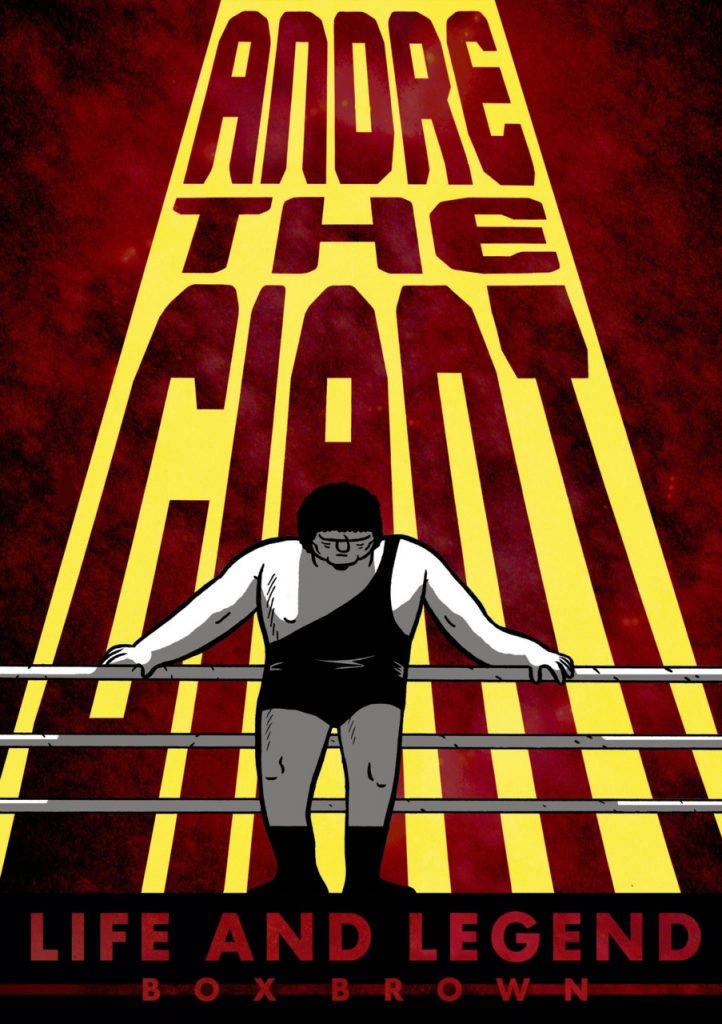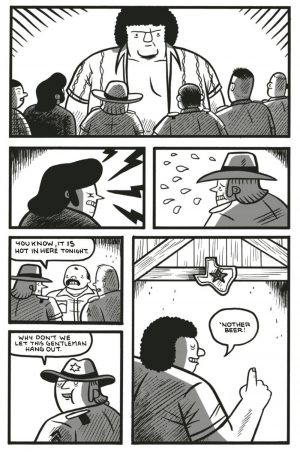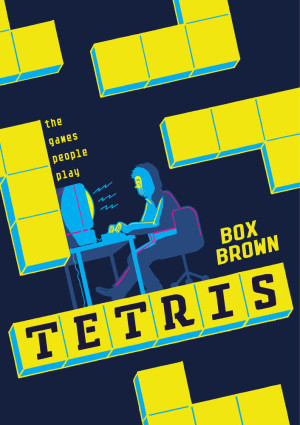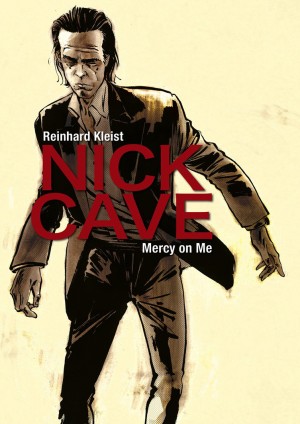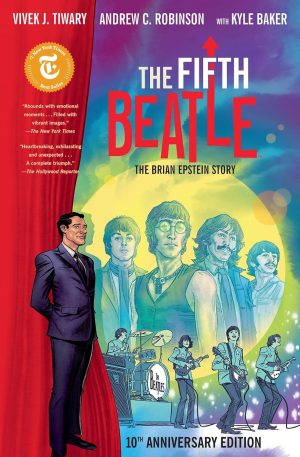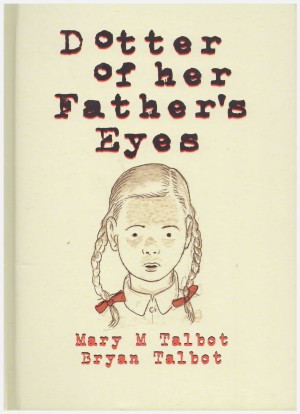Review by Ian Keogh
At around seven feet and five hundred pounds, even by present day standards wrestler André René Roussimoff deserves his stage name of André the Giant. In a form of entertainment that specifically creates villains, often from former heroes, he was pretty well universally loved, and not just in the USA. One of his fans was the teenage Box Brown, captivated by the sheer character he brought to wrestling, and 25 years later he produced this informed biography without letting his admiration stand in the way of unflattering aspects.
It surprises from the start. Growing up in France, at 12 André was considered too large for the school bus, so Samuel Beckett, on whose estate his father worked, gave him a lift to school every day. It’s difficult to imagine a more unlikely pairing, but several other interesting items of trivia litter André’s story. He fought Chuck Wepner, the inspiration for Rocky Balboa, while his appearance in The Princess Bride spawns a fund of anecdotes from the film’s other celebrities. These, of course, were just sidelines to his main business of wrestling, yet whether due to a paucity of source material or Brown’s stylistic choice, the wrestling content is repetitious and episodic, giving the feeling that Brown’s omitting as much as he presents.
The opening page quotes a Hulk Hogan interview where has asks people to consider how life was for André at his vast size. It’s a central theme of Life and Legend, and this is where Brown scores. Most available footage is André playing a character, either in the wrestling ring or outside it, but Brown’s cartooning illustrates just how André felt at the insults hurled his way. It’s balanced by less savoury stories told about him, and Brown doesn’t gloss over these, although his introduction notes that wrestling is an industry where exaggeration and hyperbole are a way of life, and not all stories are necessarily true.
Brown’s interpretation of footage easily located online is interesting, with quotes from an interview with David Letterman occupying five pages. Brown chooses to omit André saying he’s given up drinking, perhaps on the basis that a few minutes later he jokes about having two or three bottles of wine with a meal, but not everyone would consider his reactions as ponderous as Brown suggests. Another matter that appears to be glossed over is that André had a daughter, but that receives an airing near the end of the book, again not painting the subject in a particularly good light.
After 220 pages of story material there’s a sense of Life and Legend being a biography that doesn’t illuminate its subject. All we’ve been told about André is that he had a prodigious appetite for drink and food, he enjoyed his ranch, liked a game of cards and a joke (occasionally cruel or offensive), and suffered from back pain from the mid-1980s. Beyond the few questions of the Letterman interview and how insults stung we learn little of what André thought or felt about anything. There are enough anecdotes to go some way to compensating, but the lack of depth may disappoint.
